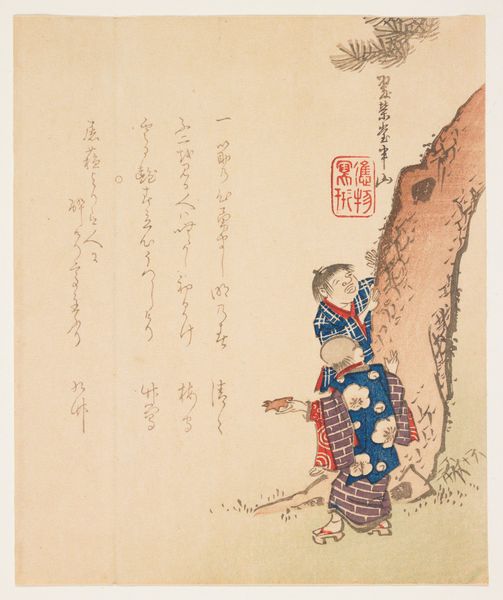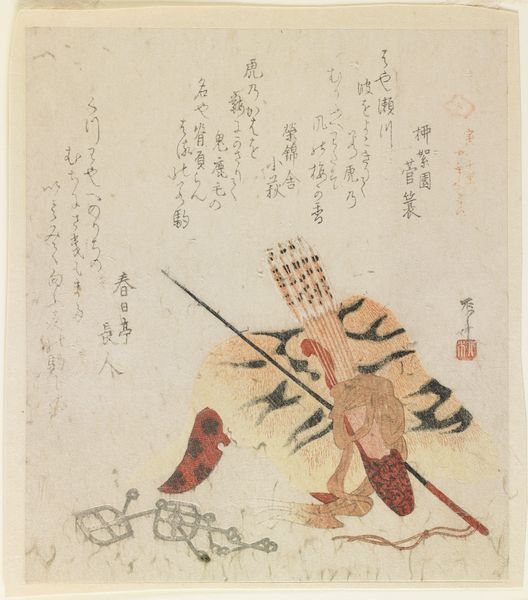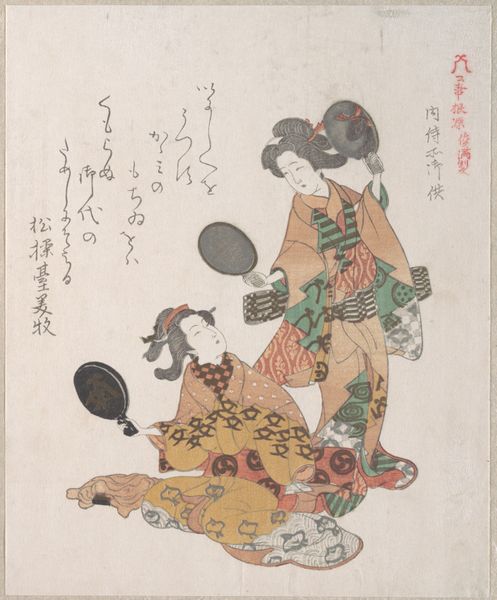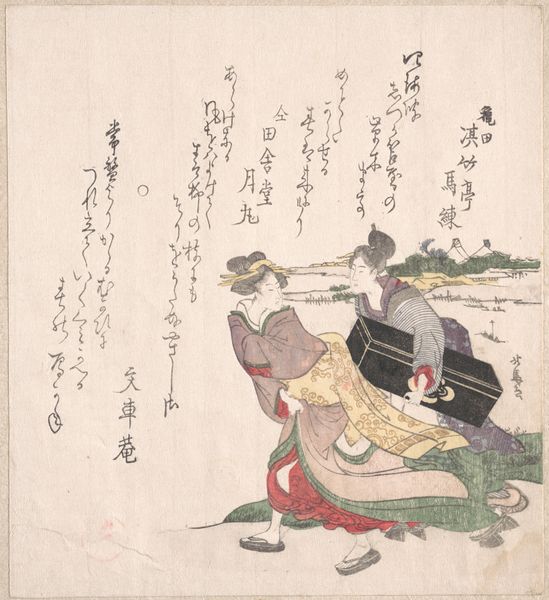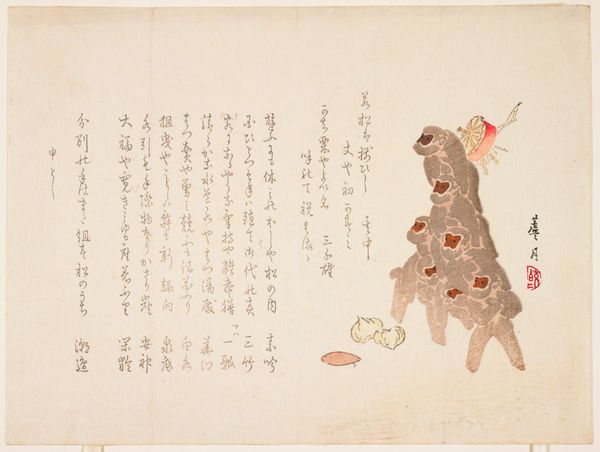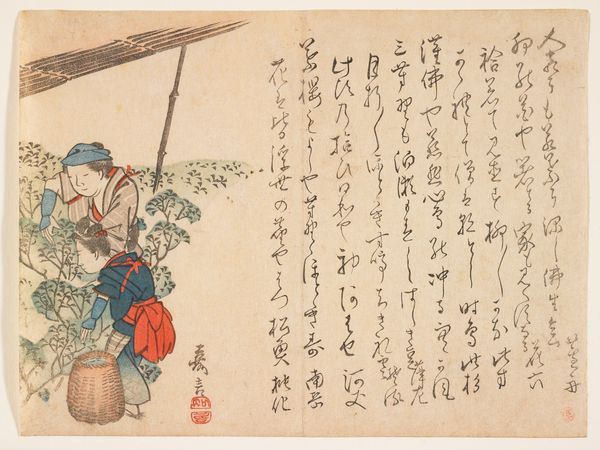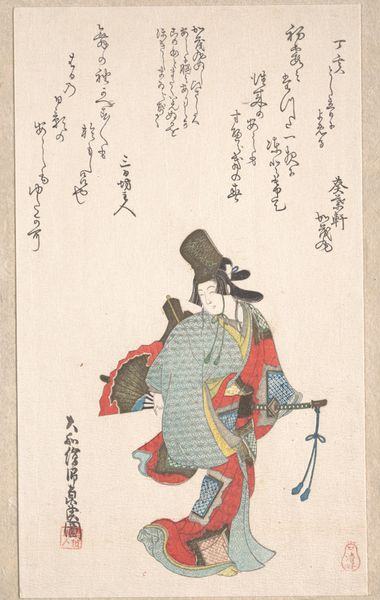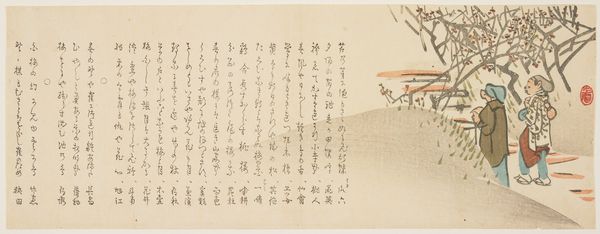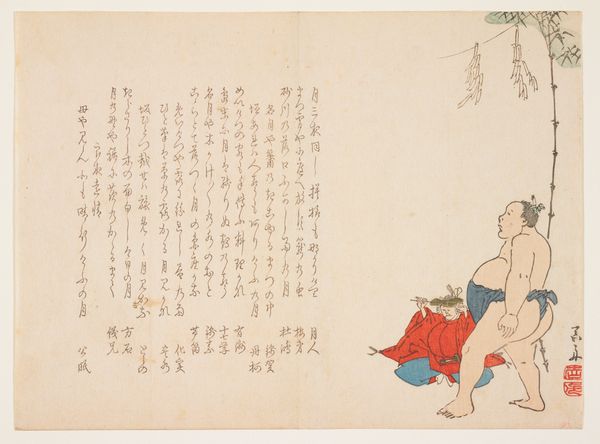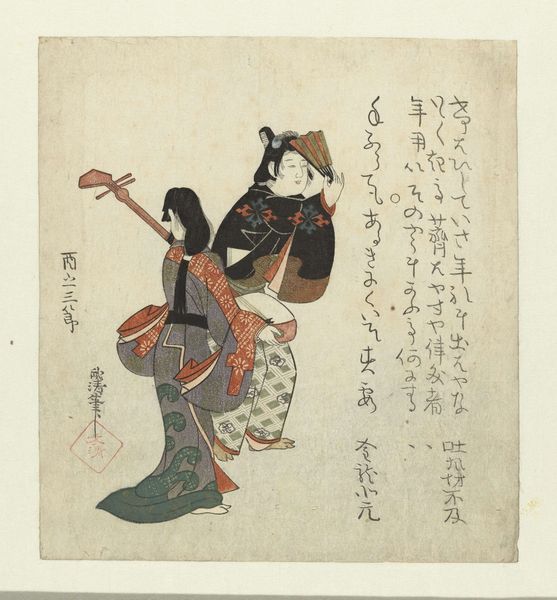
print, ink, woodblock-print, pencil
#
narrative-art
#
ink paper printed
# print
#
asian-art
#
ukiyo-e
#
japan
#
figuration
#
personal sketchbook
#
ink
#
woodblock-print
#
pencil
#
sketchbook drawing
#
watercolour bleed
#
watercolour illustration
Dimensions: 7 3/8 x 7 3/4 in. (18.7 x 19.7 cm) (image, sheet)
Copyright: Public Domain
Curator: Let's discuss this vibrant woodblock print, "New Year's Celebration," by Ishida Shuho, dating from around 1854-1859. It resides here at the Minneapolis Institute of Art. Editor: My first impression? Nostalgic. The soft hues and the simple composition create a scene that feels intimate and a little bit melancholic. The thin paper reminds you of something you could accidentally destroy. Curator: That's insightful. What grabs me is how this work encapsulates socio-political norms of the Edo period in Japan, especially concerning children. Notice the child carrying the large banner. New Year's was heavily symbolic – a time for renewal and hoping for social harmony, but its rituals differed across social classes. This print suggests how the artist wanted society to reflect those differences. Editor: Interesting. Thinking about it from a material perspective, the work has something quite tactile about it. Imagine the skill required to carve those intricate lines into the woodblock! It is important not to disregard this, nor how the layering of ink and use of color all contribute to this mood and contribute to a sense of material culture of the time. Curator: Precisely. The colors—red, green, gray, black—are very intentional, highlighting how children were considered within their communities. How childhood innocence contrasted with future societal roles is not coincidental. And for a new year, that child, possibly as a son, might also have social pressures to succeed. Editor: And of course, let's not forget the materiality of the ink and paper themselves. How were they sourced? Who produced them? The level of care put into the production, too, seems to signal something about the value society placed on celebratory art. It's almost a commentary on consumerism, even back then. Curator: Indeed, considering ukiyo-e prints circulated amongst diverse audiences, it makes me wonder about how we grapple with issues such as child labor and societal pressures today. Does anything like it still happen today? Editor: Thinking about it through a material lens makes me want to handle the original object so that I could see its imperfections and to understand all those different textures of its surface. Understanding the materiality is key to seeing the art itself. Curator: I agree; that blend of material analysis and critical thinking makes it an interesting subject and experience to contemplate within contemporary discussions on equality. Editor: This print feels especially charged knowing its historical period and that its creation as something more than just a depiction of a joyful event makes you consider the material conditions behind it and how the medium shaped what was possible.
Comments
minneapolisinstituteofart almost 2 years ago
⋮
To illustrate the five poems about New Year's that appear on this print (including one by the artist himself), Ishida Shñhø depicted two children dressed in holiday attire. The red padded coat worn by the girl suggests that they are outside, probably on their way home from a shrine where they prayed for happiness and good health for the coming year. The twig held in the girl's hand is mayudama, a common decoration for New Year's, sold at shrines during the holiday season. Adorned with red and white pieces of glutinous rice, mayudama resembles a flowering branch-a harbinger of spring. The boy carries a purple banner emblazoned with a crest, which will also be used as a New Year's decoration for the house. Without showing their faces, Shñhø's design successfully conveys the tenderness between the two children, probably sister and brother, and the celebratory mood of the season.
Join the conversation
Join millions of artists and users on Artera today and experience the ultimate creative platform.

